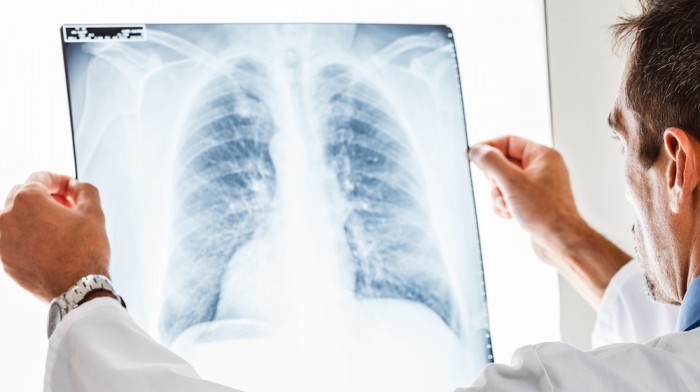
Lung cancer is among the most stigmatized types of cancer because of its strong association with smoking. While about 80% of lung cancers are related to smoking, about 10-20% of lung cancers happen in people who have never smoked.
“There’s a lot of stigma surrounding lung cancer because people assume it’s only related to smoking,” said Naomi Fujioka, MD, a thoracic oncologist with University of Minnesota Physicians (M Physicians) practicing at the University of Minnesota Masonic Cancer Center. “There is a need to reduce this stigma, both to help those who never smoked, but also to help people who quit smoking long ago and people who cannot quit despite their best effort, given how terribly addictive nicotine in cigarettes is.”
The stigma and stereotype that only smokers get lung cancer might also influence nonsmokers and medical providers to mistake the symptoms caused by lung cancer for something less deadly. For some people, lung cancer might be related to an established cause other than smoking.
“Here in Minnesota, there’s a lot of radon, which is a well-established risk factor for lung cancer. We try to advocate for radon testing, which is inexpensive and easy to access,” Dr. Fujioka said.
Radon, an odorless, invisible natural gas that comes from the soil, is three times higher in Minnesota than the U.S. average, and is a leading cause of lung cancer in nonsmokers. If testing shows that radon levels in a home are high, a mitigation system can be installed to reduce or eliminate the gas. However, radon only explains a relatively small proportion of lung cancer cases. In most people who never smoked, it’s not known why lung cancer develops and researchers are working hard to understand this.
In people who are currently smoking or former smokers, getting regular lung cancer screenings can help catch the disease at an early stage, where it is still curable. Lung cancer screening is recommended for individuals between 50 and 80 years old with a certain history of smoking who are currently smoking or have quit within the last 15 years.
“One big issue is that many times, lung cancer doesn’t really cause symptoms until it’s too late and it’s already spread outside of the lung, at which point it’s treatable but not generally curable,” Dr. Fujioka said. “Coughing, shortness of breath and fatigue are all common, but there aren’t always telltale signs.”
This means that patients might think they have pneumonia or a cold, seeking an X-ray or CT scan only when the symptoms persist. Since symptoms often appear at a more advanced stage, early detection with CT scans can save lives. If lung cancer is found at a later stage after it has spread outside of the lung, lung cancer researchers, including at the University of Minnesota, are working to improve treatment and outcomes for patients.
At the Masonic Cancer Center, Dr. Fujioka and her colleagues are working to bring new cancer treatment clinical trials to patients. Because of clinical trials, new treatments have been developed for lung and other cancers that have dramatically changed the outcomes and futures of innumerable patients. She is also part of the new M Health Fairview Developmental Therapeutics Clinic aimed at conducting clinical trials of treatments that are in early development or involve multiple types of cancers, which requires a dedicated team and expertise. The goal of the new clinic is to bring bench-to-bedside research to the patient.
“It takes a lot of different types of people to take care of a patient. Here at M Physicians, we have a talented team of not only medical oncologists, but cancer surgeons, radiologists, pathologists, nurses, interventional radiologists, pharmacists and all the other team members needed to provide excellent care. Seeing a disease-focused specialist can make a difference,” Dr. Fujioka said. “But, most importantly, patients should look for a team-approach to care.”
Dr. Fujioka’s clinic has also expanded to include a new patient intake team and nurse coordinators to help patients navigate next steps, timeframes and the work being done behind the scenes. This enables Dr. Fujioka to have more useful and informational visits with patients.
“We have to keep building awareness of the stigma surrounding lung cancer, whether it’s related to smoking or not,” Dr. Fujioka said. “It’s really hard to quit smoking, and unfortunately there’s a lot of negative judgment of people with lung cancer. It’s also important to highlight getting screened regularly because it’s been shown to reduce mortality from lung cancer.”